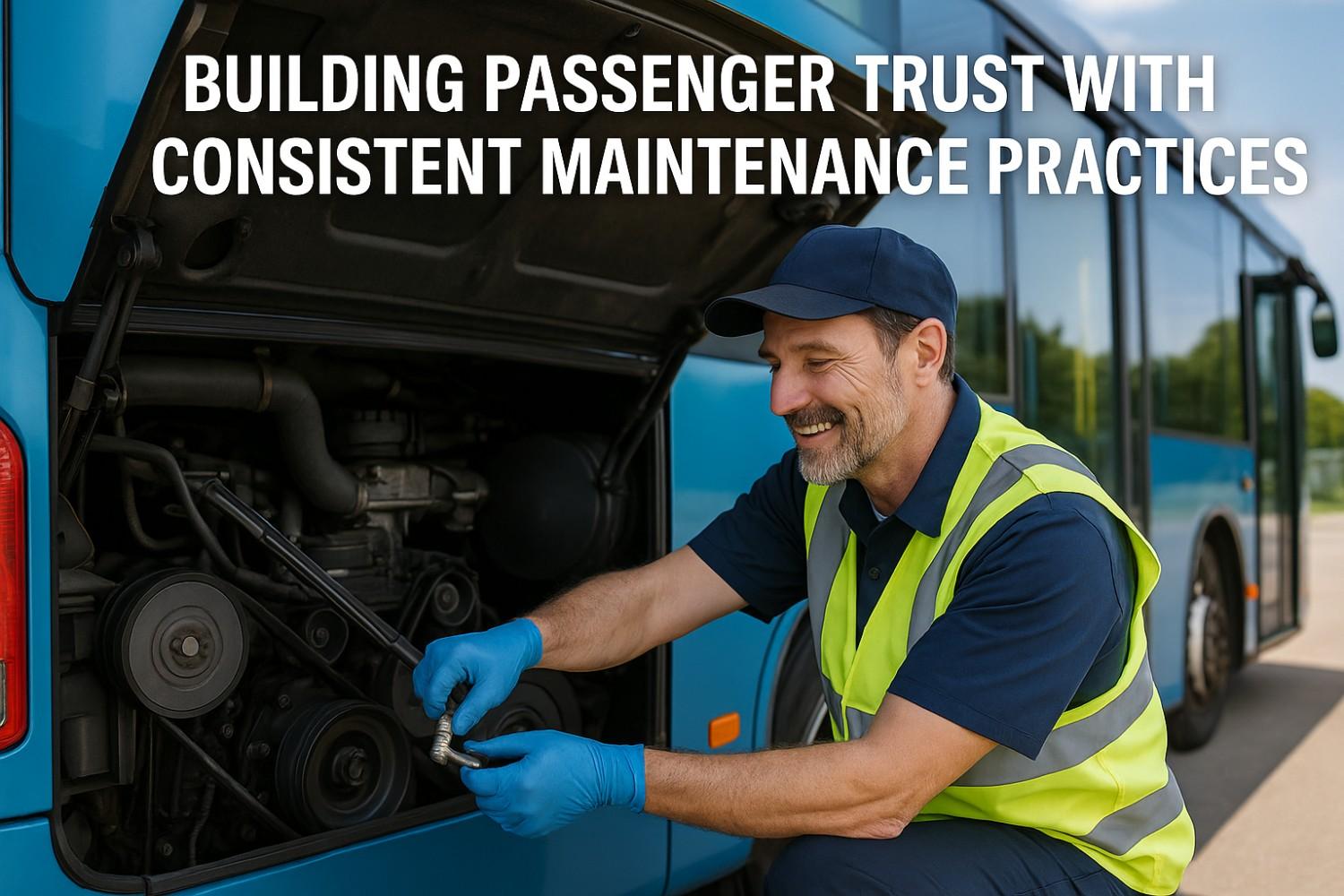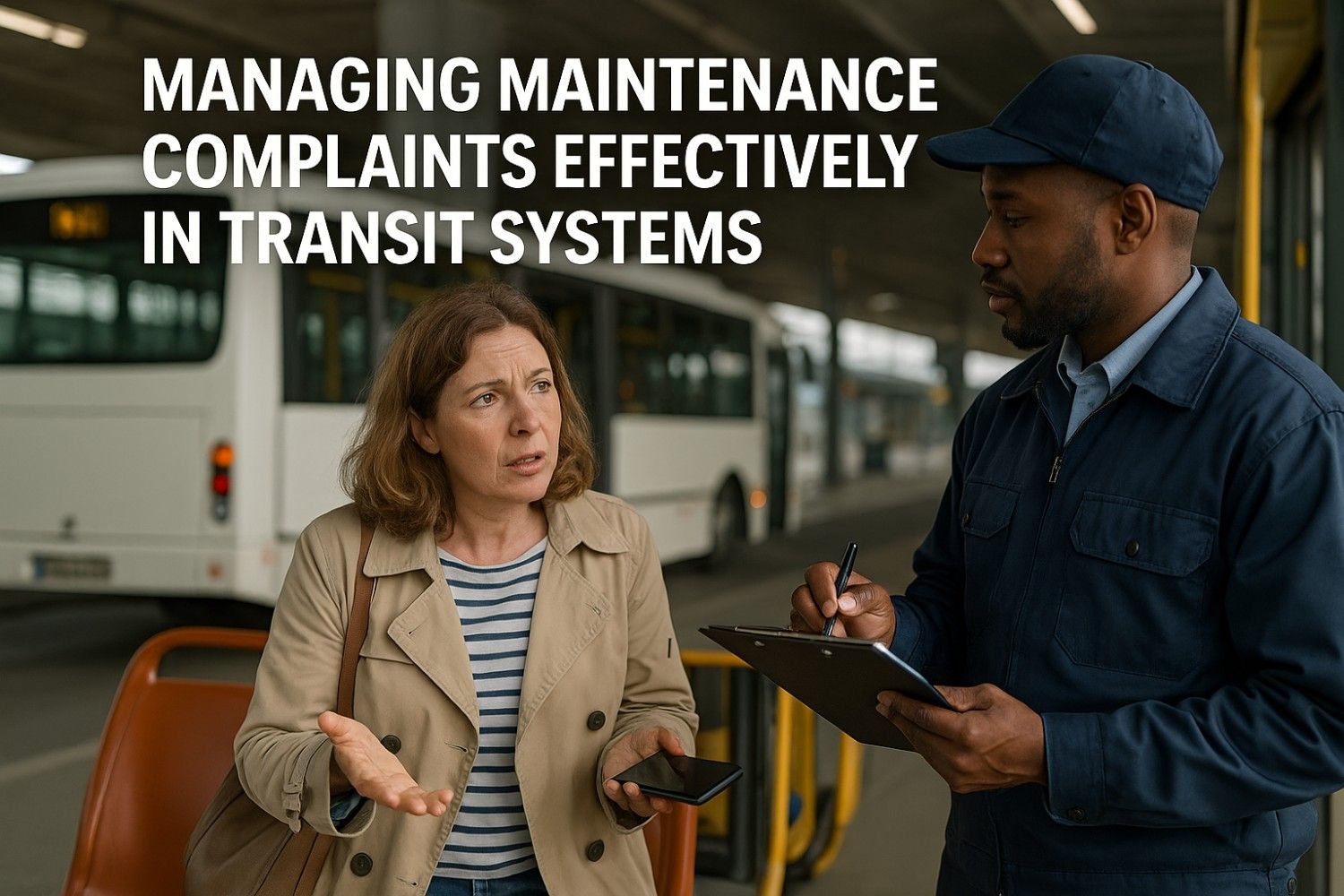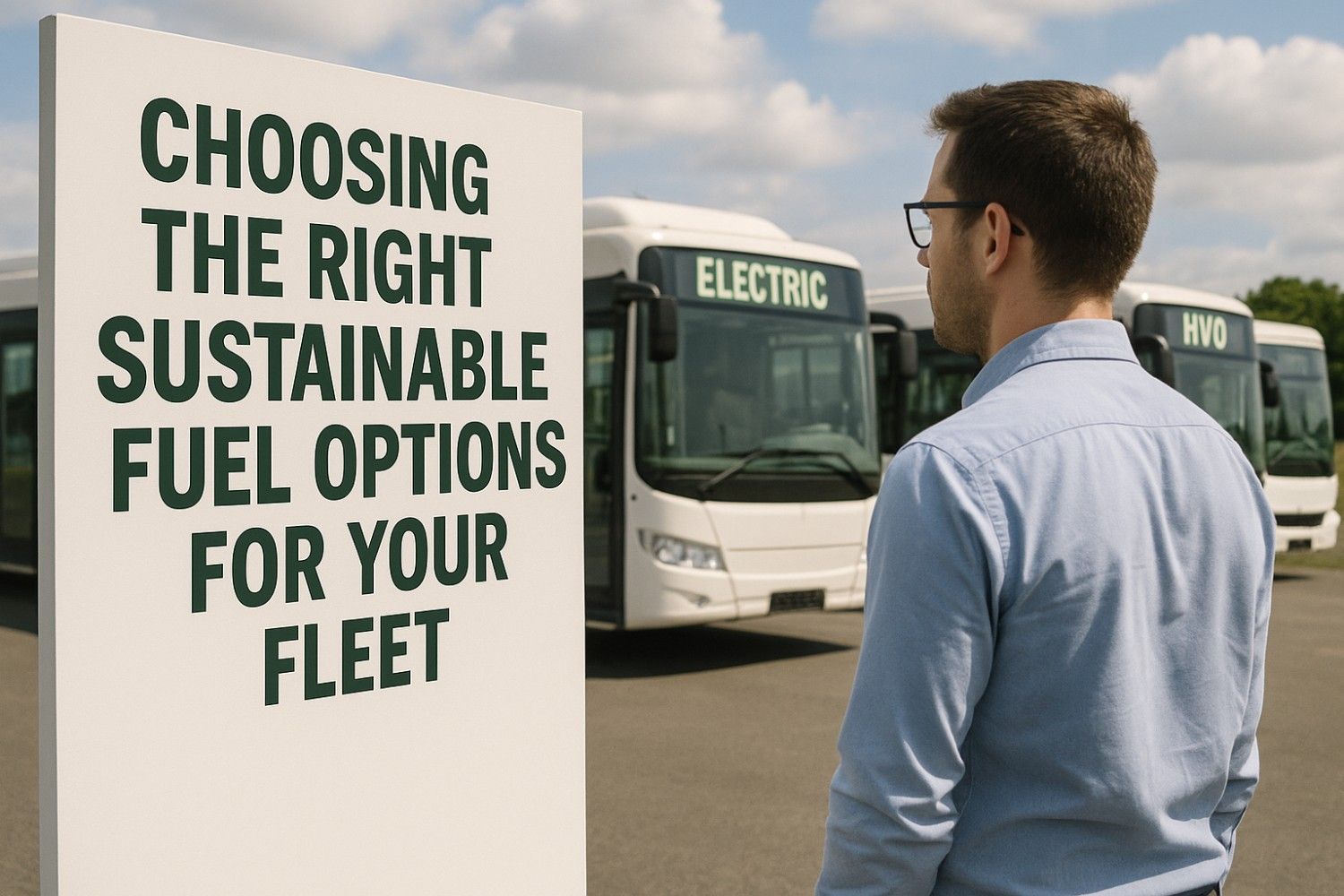Passenger trust forms the foundation of successful public transportation systems. Every journey passengers take represents an act of faith in fleet operators, mechanics, and maintenance systems working seamlessly behind the scenes. When buses arrive on time, operate smoothly, and provide safe, comfortable transportation day after day, trust builds naturally. However, maintaining this consistency requires sophisticated maintenance strategies that prevent failures before they impact passenger experiences.
Modern transit agencies face unprecedented challenges balancing passenger expectations with operational realities. Riders demand reliable, punctual service while agencies struggle with aging infrastructure, budget constraints, and complex mechanical systems requiring constant attention. A single breakdown erodes years of trust-building, as passengers remember negative experiences far longer than positive ones. The gap between passenger expectations and operational capabilities continues widening without strategic maintenance approaches.
Fleet operators implementing comprehensive Bus CMMS platforms report transformative improvements in passenger satisfaction metrics: 92% on-time performance, 95% passenger satisfaction ratings, 87% reduction in service disruptions, and measurable increases in ridership. These results demonstrate how data-driven maintenance practices directly translate into passenger trust, proving that invisible maintenance work creates visible service excellence that riders notice, appreciate, and reward with continued patronage.
The Foundation: Predictive Maintenance Strategies
Passenger trust begins with predictable, reliable service that requires proactive maintenance approaches preventing failures before they occur. Traditional reactive maintenance creates unpredictable service disruptions that shatter passenger confidence, as riders never know when their bus might break down mid-route. Advanced computerized maintenance management platforms transform maintenance from reactive crisis management into predictive science that anticipates component failures weeks before they impact operations.
Predictive Analytics Architecture
Modern maintenance systems analyze thousands of data points from vehicle sensors, historical maintenance records, and operational patterns to predict component failures with remarkable accuracy. Oil analysis reveals engine wear patterns, vibration sensors detect bearing deterioration, and thermal imaging identifies cooling system inefficiencies before they cause breakdowns. This comprehensive monitoring creates early warning systems that enable planned interventions during scheduled downtime rather than emergency roadside repairs that strand passengers.
Machine learning algorithms continuously refine failure predictions by analyzing patterns across entire fleets, identifying which combinations of factors predict specific failures. When similar vehicles operating in comparable conditions experience component failures, the system flags at-risk buses for preventive maintenance. This fleet-wide intelligence prevents identical failures from cascading through the system, ensuring passenger service remains uninterrupted even as individual components approach end-of-life.
Component-Specific Monitoring Protocols
- Powertrain Health Tracking: Continuous monitoring of engine performance, transmission function, and drivetrain efficiency
- Brake System Surveillance: Real-time assessment of pad wear, fluid condition, and ABS functionality
- HVAC Performance Analysis: Climate control effectiveness monitoring ensuring passenger comfort
- Electrical System Diagnostics: Battery health, charging system efficiency, and lighting system integrity
- Suspension and Steering Monitoring: Ride quality metrics and handling characteristic analysis
Consistency Through Standardized Maintenance Protocols
Critical Consistency Factors
- Standardized Inspection Procedures: Identical checklists ensure every vehicle receives thorough examination
- Uniform Quality Standards: Consistent acceptance criteria across all maintenance activities
- Documented Work Processes: Detailed procedures eliminate variability in maintenance execution
- Regular Calibration Requirements: Ensuring diagnostic equipment provides accurate, reliable data
Passengers notice consistency more than excellence. A fleet that delivers acceptable service reliably builds more trust than one alternating between outstanding performance and occasional failures. Standardized maintenance protocols through comprehensive digital systems eliminate the variability that creates unpredictable passenger experiences, ensuring every bus meets identical standards regardless of which technician performed maintenance or when service occurred.
Standardization extends beyond mechanical procedures to include parts quality, fluid specifications, and even cleaning protocols. When passengers board different buses throughout the week, consistent interiors, similar ride quality, and identical operational characteristics reinforce trust. The system tracks which parts were installed on each vehicle, ensuring consistency in component quality across the entire fleet while flagging any deviations from standard specifications.
Transparency: Communicating Maintenance Practices
Trust flourishes in environments of transparency where passengers understand the care invested in their safety and comfort. Modern transit agencies increasingly share maintenance practices publicly, demonstrating commitment to vehicle safety through visible inspection protocols, published maintenance schedules, and accessible safety records that prove systematic attention to fleet health.
Public-Facing Maintenance Communications
Digital Maintenance Dashboards
Real-time displays showing fleet health metrics and recent maintenance activities
Service Disruption Notifications
Proactive communication explaining maintenance-related schedule changes
Safety Certification Publishing
Making inspection results and compliance records publicly accessible
When maintenance activities require service adjustments, transparent communication transforms potential frustration into appreciation. Explaining that route modifications accommodate necessary brake system overhauls demonstrates prioritization of passenger safety over convenience. Riders respect agencies that communicate honestly about maintenance needs rather than offering vague explanations for service disruptions.
Building Trust Through Visible Quality
Passenger perception of maintenance quality directly correlates with visible vehicle condition. Clean interiors, functioning climate control, smooth rides, and quiet operation signal thorough maintenance practices even when passengers never see mechanics' work. Comprehensive maintenance management ensures these passenger-facing quality indicators receive systematic attention alongside critical safety components, creating holistic excellence that passengers experience with every journey.
Reliability Metrics That Drive Passenger Confidence
Data-driven maintenance practices generate measurable reliability improvements that passengers experience as consistent, dependable service. Advanced fleet management platforms track key performance indicators directly linked to passenger satisfaction, enabling continuous improvement in areas riders value most.
Critical Passenger-Focused Metrics
- On-Time Performance Rates: Percentage of trips completing scheduled routes without delays
- Mean Distance Between Failures: Average miles operated before mechanical issues occur
- Service Interruption Frequency: Rate of mid-route breakdowns requiring passenger transfers
- Climate Control Effectiveness: Percentage of trips maintaining comfortable temperatures
- Ride Quality Consistency: Suspension system performance across fleet and routes
- Cleanliness Maintenance: Interior condition scores and cleaning protocol compliance
These metrics provide objective evidence of maintenance effectiveness while identifying specific areas requiring improvement. When on-time performance drops, maintenance data reveals whether powertrain issues, brake problems, or other factors cause delays. This precision enables targeted interventions that address root causes rather than symptoms, systematically eliminating passenger frustration sources.
Preventive Maintenance Scheduling That Minimizes Passenger Impact
Strategic maintenance scheduling balances vehicle availability requirements with necessary service activities, ensuring passengers rarely experience service disruptions due to maintenance. Sophisticated scheduling algorithms within modern maintenance management systems optimize when and where maintenance occurs, prioritizing off-peak hours and utilizing spare vehicles to maintain consistent service levels.
Intelligent Scheduling Strategies
Dynamic maintenance scheduling considers multiple factors simultaneously: vehicle condition, upcoming service requirements, spare vehicle availability, seasonal ridership patterns, and special event demands. The system identifies optimal maintenance windows that minimize service impact while ensuring timely intervention before components fail. When maintenance cannot wait, automated systems coordinate replacement vehicles, notify operations staff, and adjust route assignments to maintain passenger service without disruption.
Predictive scheduling extends planning horizons from weeks to months, enabling better resource allocation and parts procurement. When the system forecasts that twenty buses will require brake service within the next quarter, maintenance managers schedule work strategically across multiple weeks rather than overwhelming shop capacity with simultaneous needs. This smoothing prevents service disruptions while ensuring consistent parts availability and technician workload balance.
Safety-First Culture: The Ultimate Trust Builder
Comprehensive Safety Integration
- Pre-Trip Inspection Requirements: Mandatory safety checks before every service departure
- Post-Trip Reporting Systems: Driver feedback loops identifying emerging issues immediately
- Critical System Priority Rankings: Ensuring safety components receive immediate attention
- Multi-Point Verification Processes: Independent confirmation of safety-critical repairs
- Continuous Technician Training: Keeping maintenance staff current on safety procedures and technologies
Passenger trust ultimately rests on safety confidence. Every maintenance decision prioritizes passenger wellbeing, with safety-critical systems receiving immediate attention regardless of cost or convenience considerations. This unwavering commitment to safety creates the foundation upon which all other trust-building activities rest, as passengers recognize that their transportation provider values their lives above operational efficiency or budget constraints.
Safety culture extends beyond mechanics to encompass drivers, operations staff, and management. When drivers report unusual vehicle behaviors, maintenance responds immediately rather than waiting for scheduled service. This responsive approach prevents minor concerns from escalating into safety issues while demonstrating organizational commitment to addressing passenger safety proactively rather than reactively.
Technology Integration: Modern Passenger Expectations
Contemporary passengers expect transportation providers to leverage modern technology for enhanced service reliability and communication. Real-time bus tracking, accurate arrival predictions, and transparent service status updates create confidence that agencies operate efficiently using current tools rather than outdated manual processes.
Passenger-Facing Technology Benefits
Real-Time Location Tracking
GPS-enabled vehicle monitoring providing accurate arrival time predictions
Service Status Notifications
Automated alerts informing passengers of delays or route modifications
Maintenance Impact Communication
Transparent explanations when service adjustments accommodate necessary repairs
Behind passenger-facing technology, sophisticated maintenance systems ensure service reliability that makes real-time tracking valuable. Accurate arrival predictions only matter when buses actually arrive as predicted, requiring maintenance practices that prevent unexpected breakdowns. The integration of passenger information systems with maintenance management creates accountability loops driving continuous improvement in service consistency.
Quality Assurance: Maintaining Standards Over Time
Trust requires sustained excellence rather than temporary improvement. Comprehensive quality assurance programs within maintenance operations ensure standards remain consistent as fleets age, staff changes, and operational demands evolve. Regular audits, performance reviews, and continuous improvement processes prevent gradual degradation in maintenance quality that slowly erodes passenger confidence.
Quality Verification Methods
- Random Inspection Audits: Independent verification that completed maintenance meets standards
- Technician Performance Reviews: Ongoing assessment ensuring consistent work quality
- Parts Quality Validation: Confirming replacement components meet specifications
- Process Compliance Monitoring: Verifying adherence to standardized maintenance procedures
- Customer Feedback Integration: Incorporating passenger observations into quality assessments
Quality assurance extends to supplier relationships, ensuring parts vendors maintain consistent quality standards over time. When component quality degrades, passenger experiences suffer even when installation procedures remain perfect. Systematic parts quality tracking identifies problematic suppliers before substandard components compromise fleet reliability, protecting both passenger safety and service consistency.
Environmental Responsibility: Modern Trust Dimensions
Contemporary passengers increasingly value environmental responsibility alongside traditional service reliability. Maintenance practices that optimize fuel efficiency, reduce emissions, and extend vehicle life demonstrate commitment to sustainability that resonates with environmentally conscious riders. This expanded definition of trust reflects evolving passenger values requiring holistic operational excellence.
Sustainable Maintenance Practices
Modern maintenance strategies balance immediate operational needs with long-term environmental considerations. Proper engine tuning optimizes fuel efficiency while reducing emissions, tire pressure maintenance decreases rolling resistance lowering fuel consumption, and air filter replacement ensures clean combustion minimizing pollutants. These routine maintenance activities deliver environmental benefits while maintaining the reliable service passengers expect.
Fleet electrification introduces new maintenance considerations requiring specialized knowledge and procedures. Battery health monitoring, charging system maintenance, and electric drivetrain care differ fundamentally from traditional mechanical maintenance. Successfully managing mixed fleets containing diesel, hybrid, and electric vehicles demonstrates technological competence building passenger confidence in agency capabilities to operate advanced transit solutions.
Emergency Preparedness: Trust Under Pressure
Trust truly tests itself during emergencies when normal procedures fail and rapid response becomes critical. Comprehensive maintenance programs include emergency protocols ensuring rapid vehicle recovery when unexpected failures occur, minimizing passenger disruption even during worst-case scenarios.
Emergency Response Capabilities
Roadside Assistance Networks
24/7 mobile maintenance teams responding to breakdowns within minutes
Backup Vehicle Deployment
Rapid replacement bus dispatch minimizing passenger wait times
Passenger Communication Protocols
Immediate updates informing affected riders about situations and solutions
Emergency preparedness extends beyond mechanical response to include passenger care during disruptions. When breakdowns occur, trained staff prioritize passenger safety and comfort while coordinating vehicle recovery. This comprehensive approach transforms potential disasters into managed incidents demonstrating organizational competence under pressure, actually strengthening passenger trust through effective crisis management.
Frequently Asked Questions
How does Bus CMMS help build and maintain passenger trust through consistent maintenance?
Bus CMMS transforms maintenance from reactive firefighting into predictive science that prevents the service disruptions eroding passenger confidence. The platform continuously monitors vehicle health through integrated telematics and sensor data, identifying potential failures weeks before they impact operations. This predictive capability enables maintenance scheduling during off-peak hours using spare vehicles, ensuring passengers never experience mid-route breakdowns or service cancellations due to unexpected mechanical issues. Standardized digital checklists ensure every vehicle receives identical thorough inspections regardless of which technician performs the work, creating the consistency passengers experience as reliable service. Real-time dashboards provide operations teams instant visibility into fleet health, enabling proactive replacement vehicle deployment if maintenance needs arise unexpectedly. By tracking key metrics like on-time performance, mean distance between failures, and service interruption frequency, the platform quantifies reliability improvements directly linked to passenger satisfaction. Advanced scheduling systems balance vehicle availability with necessary service activities, optimizing when and where work occurs to minimize passenger impact. With documented improvements including 92% on-time performance and 87% reduction in service disruptions, systematic maintenance practices create the consistent, dependable service building lasting passenger trust.
What ROI can transit agencies expect from implementing Bus CMMS for passenger-focused maintenance?
Transit agencies implementing comprehensive fleet management systems for passenger-focused maintenance typically achieve return on investment within 8-14 months through combined ridership increases and operational cost reductions. Improved service reliability directly increases ridership by 12-18% as passengers develop confidence in consistent on-time performance, translating to significant fare revenue increases for agencies serving thousands of daily riders. Predictive maintenance prevents costly emergency repairs and reduces maintenance expenses by 30-40% through planned interventions during scheduled downtime rather than expensive roadside breakdowns requiring overtime labor and emergency parts procurement. Vehicle life extension of 2-4 years through optimized maintenance delays capital replacement costs worth millions while maintaining passenger-acceptable service quality. Fuel efficiency improvements of 10-15% from proper engine tuning and tire maintenance deliver substantial savings across large fleets operating thousands of daily miles. The platform reduces service disruption costs including replacement bus deployment, passenger compensation, and reputation damage that drives riders to alternative transportation. Quality assurance capabilities prevent warranty claim rejections by ensuring perfect documentation of maintenance activities, recovering thousands in repair costs. Customer satisfaction improvements reduce complaint handling costs while increasing public support for transit funding initiatives. Environmental benefits from optimized maintenance help agencies qualify for green technology grants and public recognition enhancing brand reputation. Combined with intangible benefits like enhanced community trust and improved employee satisfaction from working with reliable equipment, modern maintenance management delivers comprehensive value far exceeding software costs while fundamentally transforming passenger perceptions through consistently excellent service.
Conclusion
Building passenger trust requires unwavering commitment to consistent maintenance excellence creating reliable, safe, comfortable transportation passengers experience with every journey. The invisible work of mechanics, technicians, and maintenance managers becomes visible through service quality passengers notice, appreciate, and reward with continued patronage and positive community sentiment.
Modern transit operations demand sophisticated maintenance approaches balancing passenger expectations with operational realities, budgetary constraints, and aging infrastructure challenges. Comprehensive maintenance management systems enable this balance by transforming reactive crisis management into predictive science that prevents failures before they impact service, schedules work to minimize passenger disruption, and continuously improves reliability through data-driven decision making.
The documented improvements achieved through systematic maintenance practices—92% on-time performance, 95% passenger satisfaction, 87% fewer service disruptions—demonstrate that operational excellence creates passenger trust more effectively than marketing campaigns or service promises. When buses consistently arrive on schedule, operate smoothly, and provide safe comfortable transportation day after day, passengers notice. This earned trust becomes transit agencies' most valuable asset, creating loyal ridership supporting service expansion, fare increases when necessary, and community advocacy ensuring continued public investment in transportation infrastructure serving everyone.
Build Lasting Passenger Trust Through Maintenance Excellence
Transform your fleet maintenance into a passenger trust-building engine with proven CMMS solutions designed for modern transit operations.







